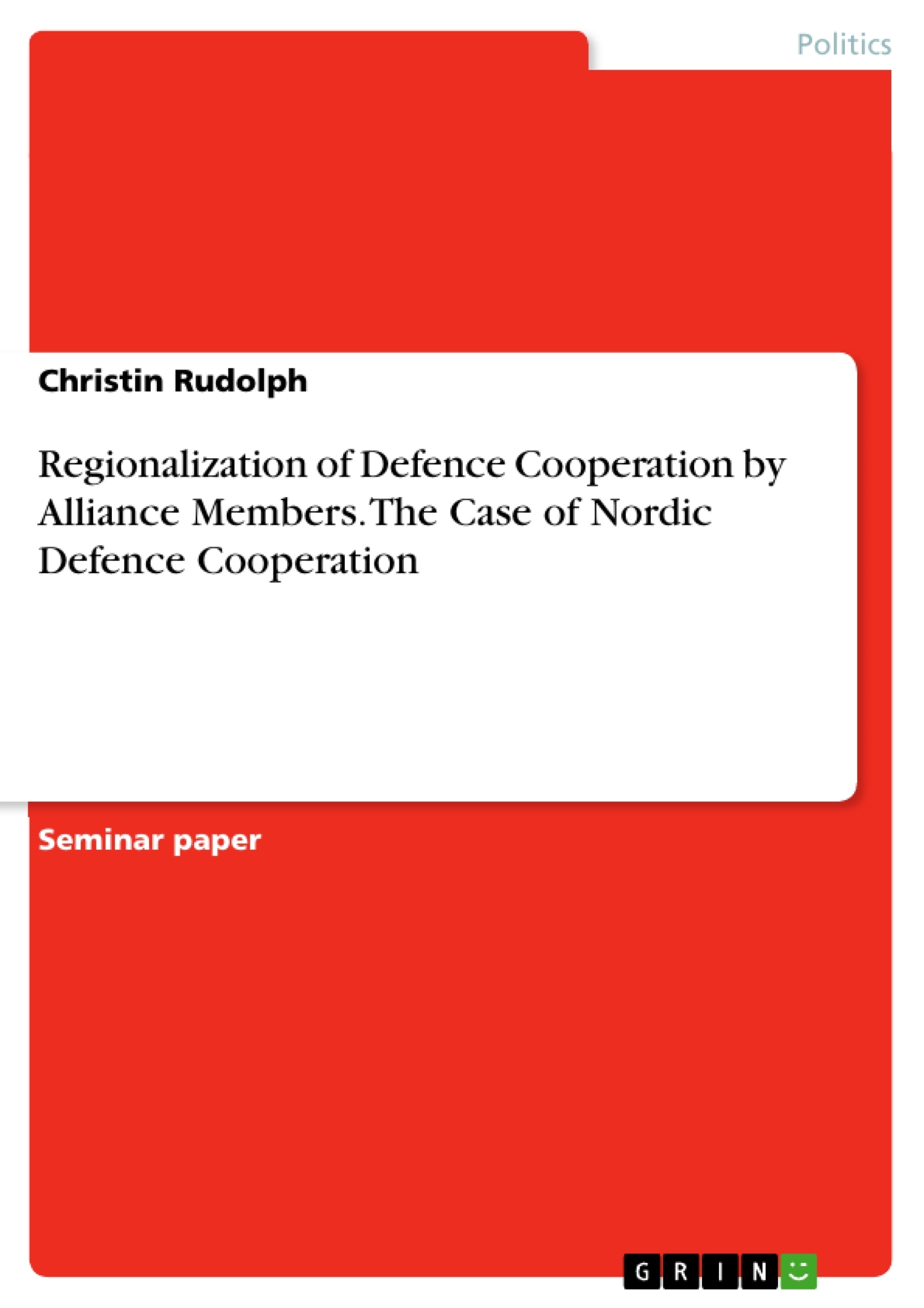This paper asks why states that are already members of alliances regionalize their defence cooperation. Or, in the selected case, why do Denmark, Finland, Iceland, Norway and Sweden cooperate in the framework of Nordic Defence Cooperation (NORDEFCO) although they are either member of NATO, the EU or both? In a globalized interdependent world, membership in multiple alliances and frameworks of cooperation is not rare. Cooperation on defence issues is not the only one having an influence on security but the area with the most direct one.
Taking the diverging interests and problems of European states such as capability gaps into account that create different needs and possibilities, it is plausible to theorize that regionalization of defence cooperation is caused by a dissatisfaction how the existing alliance addresses those needs. The main motivations stated by politicians are economic benefits and great homogeneity of the Nordic security community. Deduced from that I propose two hypotheses, one that sees the perceived need to save funds as proportional to the probability of seeking regionalization and the other putting the urgency of such a need into the same positive relationship to the regionalization of defence cooperation.
The third hypothesis relates the regionalization back to the defence-related alliance(s) the respective states are already part of by suggesting that regionalization is a way to exert influence over alliances that a state is not part of. There are scholars who argue that what NORDEFCO aims to do is better handled directly through NATO or the EU because duplication is a real risk leading to a less efficient utilization of resources (Petersson, 2010c; Hofmann, 2009) or decrease the centrality of NATO and the EU as institutions (Stiftung Wissenschaft und Politik, 2015). Regionalization of defence cooperation is an ambivalent policy that is not always perceived positively and does not automatically create more security.
Inhaltsverzeichnis (Table of Contents)
- Introduction
- Regionalization out of insufficiently addressed needs
- Methodology
Zielsetzung und Themenschwerpunkte (Objectives and Key Themes)
This research paper examines the reasons behind the regionalization of defence cooperation among alliance members, focusing on the case of Nordic Defence Cooperation (NORDEFCO). The paper aims to analyze the motivations for regionalization and explore whether the existing alliances, such as NATO and the EU, adequately address the defence needs of Nordic states.
- The role of dissatisfaction with existing alliance structures in driving regionalization.
- The influence of economic factors and resource efficiency in promoting regional defence cooperation.
- The importance of shared threat perceptions and homogeneity within a regional security community.
- The potential for regional defence cooperation to exert influence on other international structures.
- The potential for duplication and resource inefficiency in regionalized defence cooperation.
Zusammenfassung der Kapitel (Chapter Summaries)
- Introduction: This chapter introduces the topic of regionalization of defence cooperation within the context of globalized interdependence and the need for multiple alliance memberships. It highlights the specific case of NORDEFCO and raises the question of why Nordic states, already members of NATO or the EU, choose to engage in this additional form of defence cooperation.
- Regionalization out of insufficiently addressed needs: This chapter develops a theoretical framework for understanding the motivations behind regionalized defence cooperation. It proposes that the perception of unmet defence needs by existing alliances can drive states towards seeking regional solutions. The chapter emphasizes the importance of shared interests, threat perceptions, and resource efficiency in fostering regional cooperation.
- Methodology: This chapter outlines the research methods employed in the paper. It explains the reliance on official publications, statements by defence ministers, and academic literature to assess the perceptions of Nordic states regarding the adequacy of NATO and EU in addressing their defence needs.
Schlüsselwörter (Keywords)
The paper focuses on key concepts such as regionalization of defence cooperation, alliance membership, NORDEFCO, shared threat perceptions, resource efficiency, homogeneity, and the perceived inadequacies of existing alliances. The paper examines the motivations behind regionalization and its potential impact on international security structures.
- Quote paper
- Christin Rudolph (Author), 2018, Regionalization of Defence Cooperation by Alliance Members. The Case of Nordic Defence Cooperation, Munich, GRIN Verlag, https://www.grin.com/document/501248



